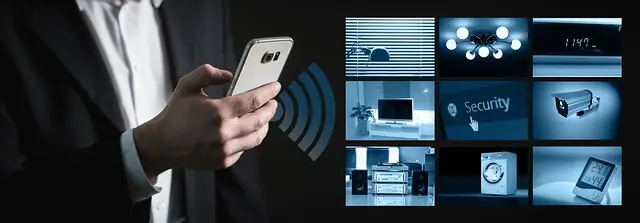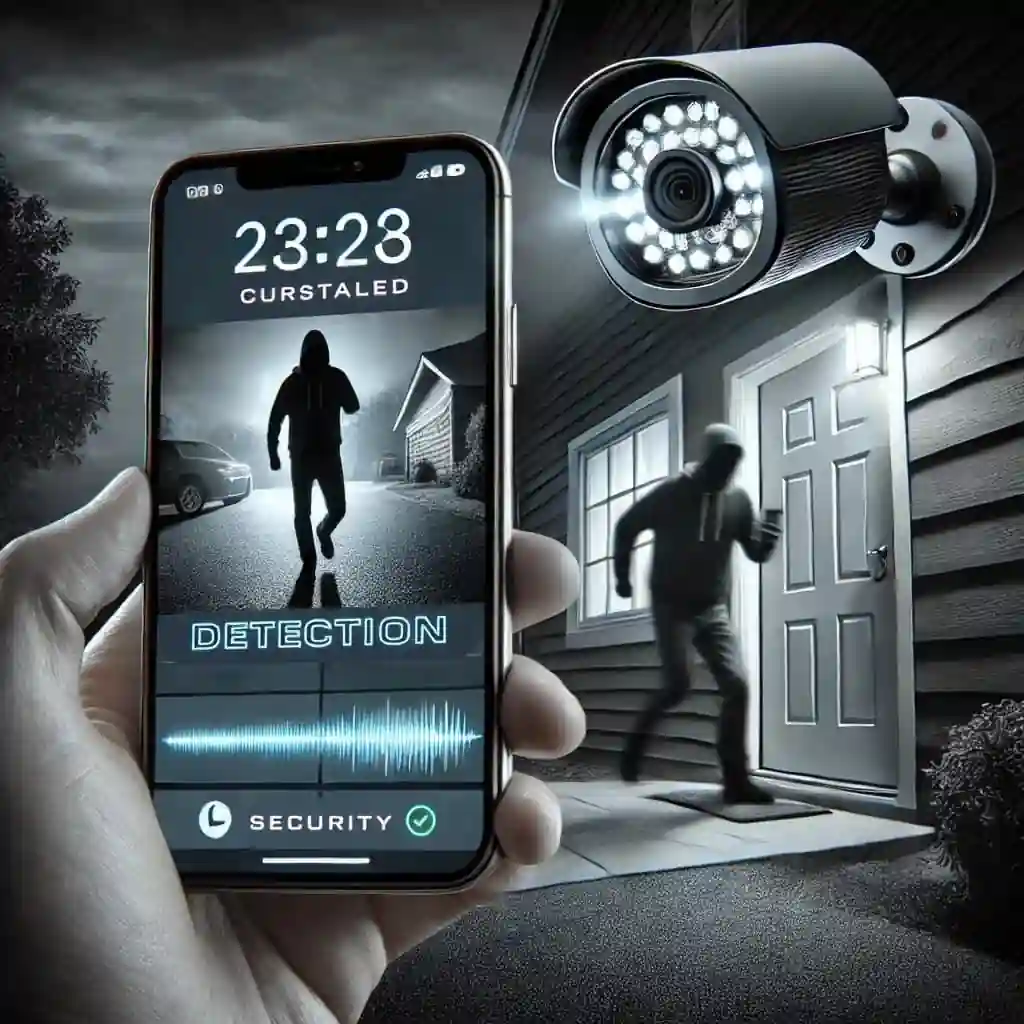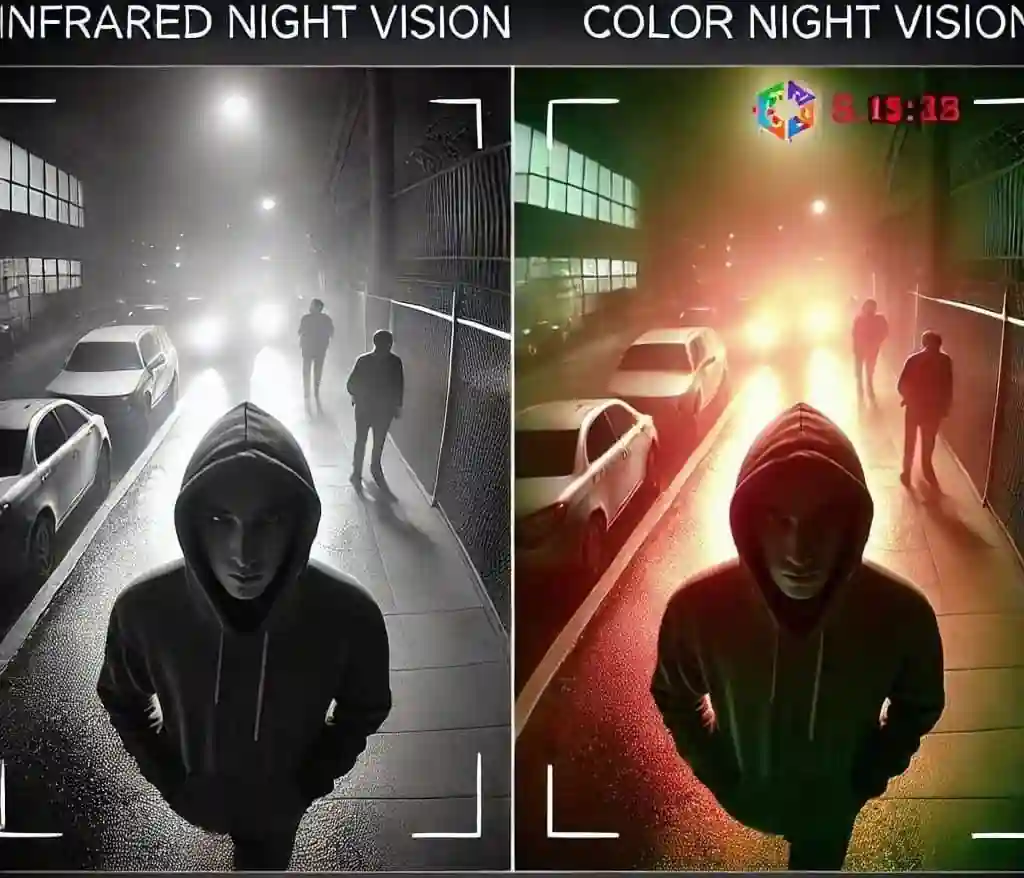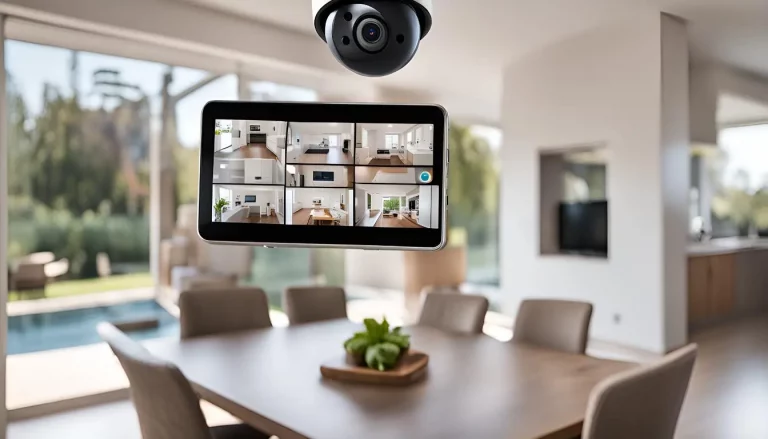What Makes a Home Security Camera System “The Best”?
A lot of people think all home security cameras are the same—just a lens, a WiFi connection, and a recording feature. But that’s far from the truth. What is a good home security camera system? It’s not just about watching what happens; it’s about preventing things from happening in the first place.
Think about it—would you rather catch a burglar on camera or scare them off before they even step onto your property? A good home security camera system does more than record; it deters, alerts, and protects. Let’s break down exactly what makes a home security camera system truly effective.
Key Features of a Good Home Security Camera System
Not all security cameras are created equal. Some offer basic video recording, while others come packed with AI-powered detection, two-way audio, and cloud storage. If you’re investing in home security, make sure your system includes these must-have features.

1. Motion Detection: The First Line of Defense
A security camera without motion detection is like a car without brakes—it’s missing a crucial safety feature. Motion detection allows the camera to trigger alerts when something moves in its field of view.
- AI-Powered Motion Tracking: Advanced systems can differentiate between a person, a car, or an animal, so you’re not constantly getting false alarms from a stray cat walking across your yard.
- Custom Motion Zones: Some cameras let you set up specific areas to monitor. That way, you won’t get alerts every time your neighbor’s tree sways in the wind.
- Instant Push Notifications: The best systems notify you in real time so you can act fast. Some even come with siren alarms or floodlights to deter intruders.

Personal Tip: If you live in a high-traffic area, tweak your motion sensitivity settings. Otherwise, you might get dozens of notifications every day!
2. Night Vision: Because Threats Don’t Sleep
A security camera that works great during the day but fails at night? Not worth it. A good home security camera system should provide clear footage 24/7, even in pitch darkness.
- Infrared (IR) Night Vision: Most cameras use infrared LEDs to capture black-and-white footage in the dark.
- Color Night Vision: Some high-end models use spotlights or advanced sensors to produce full-color video at night—great for identifying details like clothing color or car models.

Did You Know? Some cameras automatically switch to night vision mode based on ambient light, so you don’t have to worry about adjusting settings.
3. Two-Way Audio: Talk to Visitors or Warn Intruders
A two-way audio system turns your security camera into an interactive tool. You can speak directly through your camera’s app to communicate with delivery drivers, family members, or even warn off potential intruders.
- Built-in Microphones and Speakers: Allow real-time conversations through your phone.
- Noise Cancellation Technology: Ensures clear audio, even in windy or noisy environments.
- Remote Communication: Works from anywhere, whether you’re upstairs or on vacation.
Personal Experience: I once used my camera’s two-way audio to tell a delivery driver to leave a package in a hidden spot instead of right at my doorstep. Saved me from a potential package theft!
4. Wireless vs. Wired: Which One Is Better?
You’ll find two main types of home security camera systems—wired and wireless. Each has its pros and cons, and the best choice depends on your needs.
| Feature | Wireless Camera | Wired Camera |
| Installation | Easy DIY setup | Requires professional installation |
| Power Source | Battery-powered or plug-in | Hardwired to a power source |
| Reliability | May have WiFi issues | More stable connection |
| Flexibility | Can be moved easily | Fixed in one place |
- Wireless cameras are perfect for renters or those who want a quick and easy setup.
- Wired cameras are better for those looking for a long-term, stable solution.
Pro Tip: If you go wireless, look for cameras with long battery life or solar power options so you don’t have to charge them constantly.
5. Smart Home Integration: A Connected Home Is a Safer Home
Security cameras today do more than just record—they connect with smart home devices to give you full control over your home’s security.
- Alexa & Google Assistant Compatibility: Use voice commands like “Alexa, show me the front door camera.”
- Smart Doorbells & Locks: Some systems work with video doorbells and smart locks, letting you see visitors and unlock doors remotely.
- Automation & Routines: Set up automation like turning on lights when motion is detected.
Real-World Example: I linked my camera system to my smart lights, so whenever motion is detected at night, the porch lights automatically turn on. This alone has scared off a few late-night lurkers!
6. Cloud vs. Local Storage: Where Should Your Footage Go?
A good home security camera system isn’t just about capturing video—it’s about storing it securely.
- Cloud Storage: Saves footage online, accessible from anywhere. Some services require a subscription, but they offer extra security in case your camera is stolen.
- Local Storage: Uses SD cards or external hard drives to store footage. No monthly fees, but if the camera is damaged or stolen, so is the footage.
Best of Both Worlds: Many cameras offer hybrid storage, where critical footage is backed up to the cloud while regular recordings stay on an SD card.
Final Thoughts: Don’t Just Watch—Protect!
The best home security camera systems go beyond basic recording. They act as a proactive defense system, with features like motion detection, night vision, two-way audio, and smart home integration.
When choosing your setup, think about your lifestyle, home size, and security needs. Do you need a DIY wireless setup or a hardwired professional system? Do you want facial recognition, remote access, or 24/7 recording?
Your home is your safe space—make sure you protect it the smart way!


This Post Has 30 Comments
Pingback: The Best DIY Home Security System for 2025 – Find Out Which One Reigns Supreme!
Pingback: The Best Indoor Security Camera That Detects Motion Through Windows in 2025
Pingback: how to save video from blink video doorbell to computer - Guide
Pingback: Top 3 Picks for the Best Home Security Camera System in 2025
Pingback: How to Choose the Best Solar Powered Security Camera
x1ntc5
5pw24z
gn423l
ox41vi
abiq68
lienue
73usq0
4cwgyq
rylyny
53sk24
mma65s
8s5wir
e3x0gd
ysp2bu
ygbewo
s3r7aa
sqalp1
8pdf9e
69l9nf
v87cao
After study a few of the blog posts on your website now, and I truly like your way of blogging. I bookmarked it to my bookmark website list and will be checking back soon. Pls check out my web site as well and let me know what you think.
Hello, i think that i saw you visited my web site so i came to “return the favor”.I am trying to find things to improve my site!I suppose its ok to use a few of your ideas!!
I would like to thnkx for the efforts you have put in writing this website. I am hoping the same high-grade site post from you in the upcoming also. In fact your creative writing skills has inspired me to get my own web site now. Really the blogging is spreading its wings fast. Your write up is a good example of it.
188v game xuất hiện trên thị trường cá cược từ nhiều năm trước, ban đầu chỉ là một nền tảng nhỏ với số lượng trò chơi giới hạn. Nhưng với tầm nhìn chiến lược nỗ lực không ngừng, nhà cái đã phát triển vượt bậc, trở thành một trong những nhà cái nổi tiếng tại khu vực châu Á.
Dưới đây là những sản phẩm mà xn88 slot đã và đang cung cấp tại trang chủ chính thức mà bạn có thể lựa chọn trong mỗi lần truy cập.